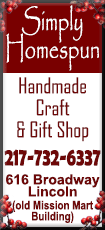|
 "I don’t want my grandchildren to remember me as the sick one, I
want to be the fun one," said Cayle, who is testing a device that
passively monitors her activity. "My family knows what I’m doing and
I don’t think they should have to change their life around to make
sure I’m OK." "I don’t want my grandchildren to remember me as the sick one, I
want to be the fun one," said Cayle, who is testing a device that
passively monitors her activity. "My family knows what I’m doing and
I don’t think they should have to change their life around to make
sure I’m OK."
Onkol, a product inspired by Cayle that monitors her front door,
reminds her to when to take her medication and can alert her family
if she falls has allowed her to remain independent at home. Devised
by her son Marc, it will hit the U.S. market next year.
As more American seniors plan to remain at home rather than enter a
nursing facility, new startups and some well-known technology brands
are connecting them to family and healthcare providers.
The noninvasive devices sit in the background as users go about
their normal routine. Through Bluetooth technology they are able to
gather information and send it to family or doctors when, for
example, a sensor reads that a pill box was opened or a wireless
medical device such as a glucose monitor is used.

According to PricewaterhouseCoopers' Health Research Institute,
at-home options like these will disrupt roughly $64 billion of
traditional U.S. provider revenue in the next 20 years.
Monitoring devices for the elderly started with products like
privately-held Life Alert, which leapt into public awareness nearly
30 years ago with TV ads showing the elderly “Mrs. Fletcher”
reaching for her Life Alert pendant and telling an operator, "I’ve
fallen and I can’t get up!"
Now companies like Nortek Security & Control and small startups are
taking that much further.
The challenge though is that older consumers may not be ready to use
the technology and their medical, security and wellness needs may
differ significantly. There are also safety and privacy risks.
“There’s a lot of potential, but a big gap between what seniors want
and what the market can provide,” said Harry Wang, director of
health and mobile product research at Parks Associates.
NURSE MOLLY
Milwaukee-based Onkol developed a rectangular hub, roughly the size
of a tissue box, that passively monitors things like what their
blood glucose reading is and when they open their refrigerator.
There is also a wristband that can be pressed for help in an
emergency.
"The advantage of it is that the person, the patient, doesn’t have
to worry about hooking it up and doing stuff with the computer,
their kids do that," said Cayle, whose son co-founded Onkol.

Sensely is another device used by providers like Kaiser Permanente,
based in California, and the National Health Service in the United
Kingdom. Since 2013, its virtual nurse Molly has connected patients
with doctors from a mobile device. She asks how they are feeling and
lets them know when it is time to take a health reading.
[to top of second column] |

Another startup, San Francisco-based Lively began selling its
product to consumers in 2012. Similarly, it collects information
from sensors and connects to a smart watch that tracks customers’
footsteps, routine and can even call emergency services. Next year
it will connect with medical devices, send data to physicians and
enable video consultations that can replace some doctor's
appointments.
Venture firms including Fenox Venture Capital, Maveron, Capital
Midwest Fund and LaunchPad Digital Health have contributed millions
of dollars to these startups.
Ideal Life, founded in 2002, which sells it own devices to
providers, plans to release its own consumer version next year.
“The clinical community is more open than they’ve even been before
in piloting and testing new technology,” said founder Jason
Goldberg.
Just this summer, Nortek bought a personal emergency response system
called Libris and a healthcare platform from Numera, a health
technology company, for $12 million. At the same time, Nortek said
some of its smart home customers like ADT Corp want to expand into
health and wellness offerings. The goal is to offer software that
connects with customers' current systems as well as medical,
fitness, emergency and security devices.
“In the smart home and health space today you see a lot of single
purpose solutions that don’t offer a full connectivity platform,
like a smart watch or pressure sensor in a bed,” said Mike O'Neal,
Nortek Security & Control president. “We’re creating that
connectivity.”

A July study from AARP showed Americans 50 years and older want
activity monitors like Fitbit and Jawbone to have more relevant
sensors to monitor health conditions and 89 percent cited
difficulties with set up.
"They (companies) have great technology, but when you can’t open the
package or you can't find directions that's a problem," said Jody
Holtzman, senior vice president of thought leadership at AARP.
Such products may help doctors keep up with a growing elderly
population. Research firm Gartner estimates that in the next 40
years, one-third of the population in developed countries will be 65
years or older, thus making it impossible to keep everyone who needs
care in the hospital.
(Reporting by Kylie Gumpert, Editing by Michele Gershberg and Diane
Craft)
[© 2015 Thomson Reuters. All rights
reserved.] Copyright 2015 Reuters. All rights reserved. This material may not be published,
broadcast, rewritten or redistributed. |